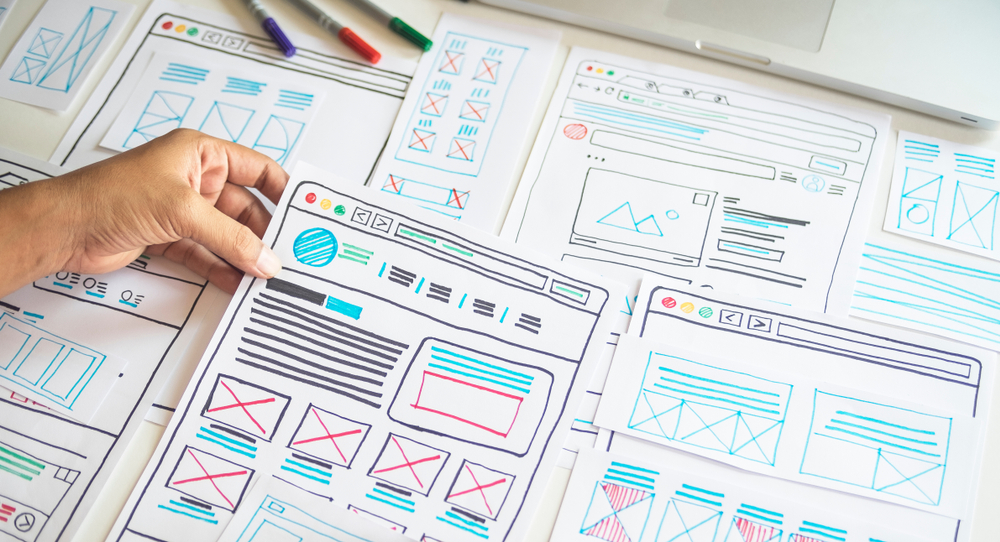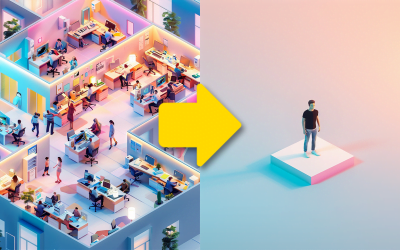There are basically three ways to be a designer:
- Freelance
- Agency
- In-house
Each of those three worlds has its own unique complexities and challenges, and it can take some experience moving between them before you find where you belong.
I’ve been on the agency side of the industry since I started Forty in 2003, and I recommitted to it in 2014 when I stayed on after Forty was acquired by Crowd Favorite. That’s just over 14 years in client services, during which I’ve gained an insane amount of experience in different industries and design scenarios. I wouldn’t trade that time for anything.
The future, however…that’s a different story.
I’ve left Crowd Favorite and joined Infusionsoft as Director of Product Design and Experience. I’ll be helping take the company’s user experiences to the next level while building out a robust and dynamic design team that can execute the heck out of the whatever comes our way in the future.
This is a bittersweet transition, of course, as I’m leaving behind a highly-talented team at Crowd Favorite. I’ve grown to love these people, and I’ll certainly miss them.
However, there’s no doubt that I’m making the right decision in moving from the agency world over to the in-house / product side of the industry. For me personally, anyway, it was the only path that made sense.
The joys of agency life
For the last fourteen years, I’ve served on what has always felt like the design equivalent of a special forces unit. We were the team that companies brought in to solve the problems their own people didn’t know how to solve. We had to be exceptionally good at the ever-evolving craft of UX design, and on top of that we had to have the mental discipline to deal with the financial constraints, deadlines, and client-juggling that are a fundamental part of agency life.
Mine isn’t a burnout story, by the way, in case you were wondering about that. Over the years, I’ve actually developed a pretty high tolerance for uncertainty and pressure. I’ve learned to trust myself, and to stay focused and calm despite the chaos that’s part of everyday life in client services. I loved the variety and the intensity of the work, and I feel privileged to have been able to have those experiences.
(While there’s certainly no shortage of agency horror stories out there, I was fortunate that my own firm and the firm that later acquired it weren’t all that crazy. I worked plenty of long hours and was under a lot of pressure at times, but it wasn’t as ridiculously bad as many out there. There’s no glory in that crap, and that lifestyle is a perfectly valid reason to get away from the agency world. That just didn’t happen to be my story.)
For me, this transition is really about my fundamental beliefs on what design really is and how it works. Agencies simply don’t do the level of deep design work I want to be doing.
“We need to go deeper”
Once upon a time, designers aspired to work at agencies. Agencies were where the sexy, glorious work was being done. All the great talent worked at agencies. Agencies were winning all the awards. The perception at the time was that you’d really only work an in-house job as a way to pay the bills while still trying to get an agency job.
However, several years ago, the industry started to shift. Companies began to realize that user-centered design and design thinking weren’t just unfortunately tasks to be outsourced, but rather core competencies that had a direct effect on their bottom line. They begin building world-class design teams in-house instead of bringing in agencies to do that work.
When I think back over the user experience design work I really admire from the last several years, it turns out that almost none of it was done by agencies. These days, industry-leading user experiences almost always seem to come from in-house teams.
Why are in-house teams beating agencies at high-end user experiences? For starters, consider three of the most fundamental elements of UX design:
- User-centeredness
- Research
- Iterative prototyping
Agency/client relationships make it notoriously difficult to achieve those things consistently:
- The client would often rather you focus on their needs rather than the user’s (instead of realizing that solving one tends to solve the other as well).
- There’s typically pressure to minimize or skip user research because the client wants you to hurry up and start showing visual deliverables.
- The client just wants you to give them “finished” deliverables instead of going through multiple rounds of iteration based on user feedback.
There’s constant pressure to cut corners and skip important steps, and agencies are forced to either play along with the client requests or get labeled as “slow and expensive.”
It’s a frustrating scenario when you understand that design is a strategic advantage that generates remarkable results when done right, and you wind up spending countless hours trying to explain to people how a design quality returns multiples on their investment.
I always felt like we did a good job fighting against those pressures. We were so focused on process fundamentals that we always started by explaining to clients what our philosophy was and how we’d be approaching their project, so they knew what to expect.
In addition, when we didn’t have the time or budget to do everything we wished for, we found scrappy ways to get as close as we could. You learn a lot of tricks for getting cheap and fast user research when nobody seems to want to pay for it. We stuck to our values, and we were often hired specifically because we didn’t cave into the typical pressures.
This fundamentals-focused approach to design always served us well, and I felt we did a metric crap-ton of great work for our clients over the years. We designed a lot of complex, robust applications, and I’m genuinely proud of the body of work we produced.
However, there’s still a ceiling to what you can accomplish in that kind of relationship. At some point, the client just wants you to send a final invoice and call it “done,” even though real design never really ends.
To be fair, there are firms (like the one I’m leaving) that offer great UX services to clients for whom doing the work internally isn’t a viable option. For those clients, it definitely makes sense to work with an agency, because they can bring a high-functioning team to work the challenge in a way that hiring a couple of in-house designers simply can’t approach.
In general, however, doing large-scale product UX design through an agency typically doesn’t make sense. The problem just doesn’t want to be solved that way. Not in the long run, anyway.




